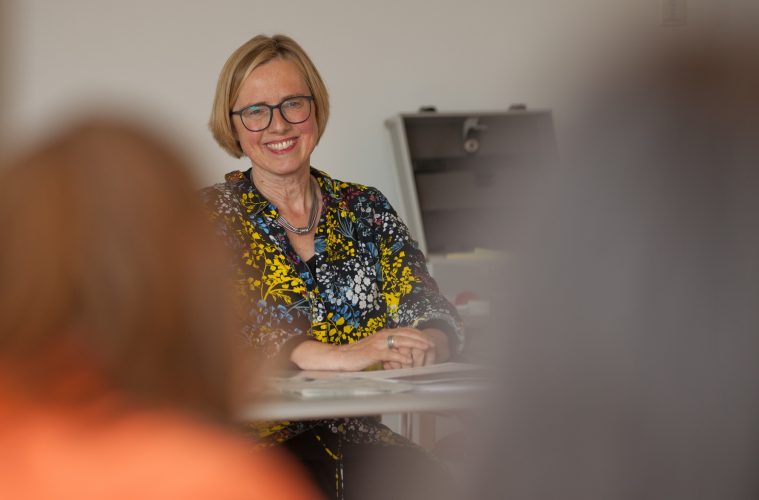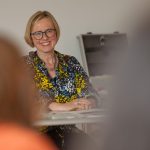On World Press Freedom Day, a group of young researchers, students and professionals in the field of Peace and Conflict Studies or related disciplines met for a workshop and exchange on their journalistic work. The workshop on Peace Journalism was organized by the InnPeace Research Center for Peace and Conflict and the Many Peaces Magazine. It is, this year more than ever, a good opportunity to remind ourselves that press freedom is challenged by current governments even in countries like Austria and Germany.
With the idea that journalists have a responsibility to contribute to debates that are relevant to society, this day appeared to be the perfect occasion to meet and discuss not only press freedom, but also how press work is related to, and influences, the public perception of peace and conflict.
Setting the scene: 12 women are sitting in a room at the Grillhof Seminar house in a village outside of the city of Innsbruck. They are attentively listening to Ursula Ott, journalist, author and Chief Editor of the German magazine Chrismon, who introduced the group to her work in the field of constructive journalism. Together they analyzed peace journalism and its various forms as alternatives to disaster or terror journalism, which mainly consists of sensational headlines and focuses on negative news, where every event becomes a disaster, attack, danger, you name it.
According to Ulrik Haagerup, journalist and founder of the “Constructive Institute” that aims to foster Constructive Journalism, 60% of all news are concerned with murder and disaster, whereas many other available topics are not reported on.This levels the ground for different kinds of conflicts. With this focus, the perception of our reality is shaped. The question of “what is wrong with the world?” is fueled by provokingly scary headlines and articles that are often not based on thorough investigation and thereby distort the importance of certain topics in public discussions. This can have various implications for the society such as a decrease in political participation.
It is challenging to find the time to investigate a topic in depth and to publish well-researched and reflected news in a fast changing world.
Furthermore, Ursula Ott shared that it is challenging to find the time to investigate a topic in depth and to publish well-researched and reflected news in a fast changing world, where news is spread across the internet within seconds. Media outlets are in competition with one another, which is accurately close to the rule of “first come – first served”. In this dynamic landscape, it is difficult to use a different kind of reporting with another focus.
The intention of Constructive Journalism, in contrast to disaster journalism, is to check the facts that are communicated thoroughly and to offer solutions and suggestions. Whereas disaster journalism may leave a big question mark and provoke fear and hate, one of the effects of Constructive Journalism is to provide a more positive outlook on life and to make the public feel less lost and overwhelmed by the news.
One of the effects of Constructive Journalism is to make the public feel less lost and overwhelmed by the news.
After the theories, challenges of transfer-oriented writing and how to apply constructive journalistic practice to articles and still keep them attractive were discussed. Ursula Ott provided the group with her experiences and practical writing skills from a journalistic perspective. The challenge of writing and editing academic content for a broader audience, which is of great importance for the work of the Many Peaces Magazine, was discussed. This mirrors the ongoing process of reflecting on journalistic practice in general and peace journalism in particular which the participants of the workshop among them several team members of the Many Peaces Magazine are undergoing in their work.
The workshop was an enriching opportunity to reflect on broader questions related to today’s media landscape and the challenges journalists are facing, but also on personal writing with its practical and ethical implications. While Constructive Journalism can be seen as one of the various forms of peace journalism, the workshop provided the participants with food for thought and many answers to the question about what peace journalism could mean and how to put it into practice.
Pictures: Juliana Krohn





